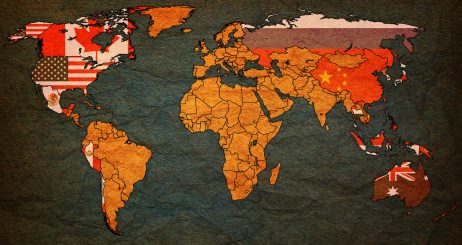As the fog rolls in over the iconic Golden Gate Bridge, the heart of San Francisco becomes a stage for global leaders converging at the Asia-Pacific Economic Cooperation (APEC) summit. This pivotal event, hosted by the United States for the first time since 2011, promises not only discussions on trade and economic growth but also a high-stakes meeting between U.S. President Joe Biden and Chinese President Xi Jinping. Against the backdrop of strained China-U.S. relations, the APEC summit takes center stage in addressing the complexities of a world grappling with conflicts like the Israel-Hamas war and Russia’s invasion of Ukraine.
Unveiling APEC: From 12 to 21 Members
APEC, an acronym for Asia-Pacific Economic Cooperation, is more than just a forum; it’s a dynamic stage where nations around the Pacific Ocean collaborate on trade, investment, and economic development. Originally comprising 12 members in 1989, this influential group has expanded to 21, boasting major players like China, Russia, Japan, the United States, and Australia. APEC’s unique structure, referring to participants as “member economies,” allows entities such as Taiwan and Hong Kong to engage actively. Collectively, APEC members represent nearly 40 percent of the global population and almost half of the world’s trade.
Biden and Xi Jinping Face Off
While the summit encompasses a spectrum of crucial discussions, the highlight unfolds on the sidelines as President Biden and President Xi Jinping engage in a face-to-face meeting. Against a backdrop of escalating tensions, including incidents like the U.S. shooting down a Chinese spy balloon and cyber-attacks on U.S. officials, the meeting aims to address the frosty relations between the two superpowers. With global issues like the Israel-Hamas conflict and Russia’s actions in Ukraine casting a long shadow, the Biden-Xi meeting is anticipated as a significant moment, even though it may not drastically alter the trajectory of China-U.S. relations.
Evaluating APEC’s Impact: Beyond Trade and Economy
APEC’s strength lies in fostering collaboration on substantial initiatives and enhancing business relations without binding agreements. Economists credit APEC with contributing to a reduction in tariffs and trade barriers, showcasing its historical significance in a period of increased globalization. However, in today’s altered trade landscape, marked by intensified economic competition, particularly between the U.S. and China, APEC faces challenges. The Biden administration’s focus on economic competition over cooperation is evident, as it seeks regional partnerships to counter China’s manufacturing dominance.
Friction Points and Forum Fashion
As leaders gather in San Francisco, echoes of past challenges resonate. From Chile’s withdrawal as host in 2019 due to mass protests to virtual meetings during the COVID-19 pandemic, the APEC summit has weathered storms. Friction points, from Biden’s absence at the Bangkok summit to walkouts during discussions on Russia’s invasion of Ukraine, underscore the delicate diplomatic dance. This year, potential clashes over the Israel-Hamas war and representation intrigue with Taiwan’s Morris Chang and Hong Kong’s Paul Chan add layers to the complex geopolitical tapestry.
As the summit unfolds, a potential U.S. government shutdown looms, adding a dose of political uncertainty. The traditional “family photo” of leaders, known for its distinctive fashion choices, awaits its next chapter. Will matching outfits make a comeback, or will the leaders opt for a more serious tone amidst global challenges? Only time will tell as the APEC summit navigates intricate diplomatic waters in the vibrant city of San Francisco.















